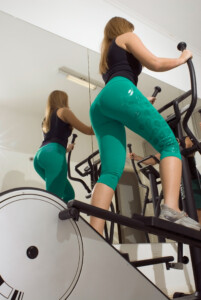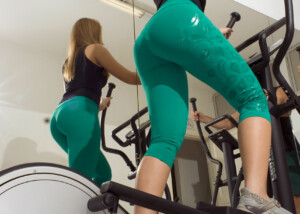Pedaling backwards on an elliptical machine may be just what the doctor ordered for your knees; there’s no need to think that this might harm your knee joints in any way.
The research was presented at the American College of Sports Medicine’s 58th Annual Meeting and 2nd World Congress on Exercise in Medicine® in Denver in 2011.
In terms of cardiovascular fitness and muscle strength, study subjects who pedaled backwards on the elliptical (and walked backwards on a treadmill) did better than those who moved forward.
Here is what the lead author of the study, Elmarie Terblanche, PhD, states:
“Participants who used backward locomotion showed significantly greater gains in quadriceps and hamstring strength.
“Additionally, they had greater aerobic capacity than the forward-locomotion group.”
The subjects had a variety of knee injuries and were randomly assigned to backwards and forwards pedaling groups.
They completed 24 supervised sessions that included exercises for strength, flexibility and balance.
The backwards pedaling group averaged a 9 percent greater capacity in aerobic fitness.
“We say, do it backward!” says Terblanche, referring to rehabilitation routines for those with knee injuries.
The deduction that I can make as a personal trainer is that people with healthy knees can benefit from pedaling backwards on the elliptical machine as well.
This is not something that should be reserved for just those with “bad knees” or who are overweight or older.
Even young athletes should do this, as it provides a unique challenge.
Backwards pedaling feels less intimidating to most people, than does walking this way.
Nevertheless, next time you’re on the elliptical, go backwards for a few minutes here and there out of your session.
For greater quadriceps recruitment, sink down a bit (lower your center of gravity).
Important: While in the lowered position, try to keep back straight!
Maintain balance by lightly keeping fingertips slightly contoured to the rails; do not outright grab the rails.
Because if you do, this will subtract workload off the legs, which will defeat the purpose of this type of training.
If you decide not to be lowered, then don’t hold on at all.
This will force your core to work to keep balanced!










































